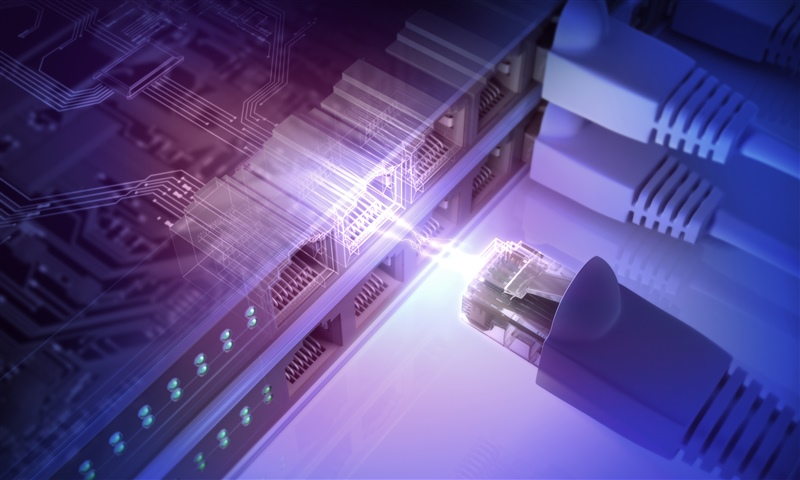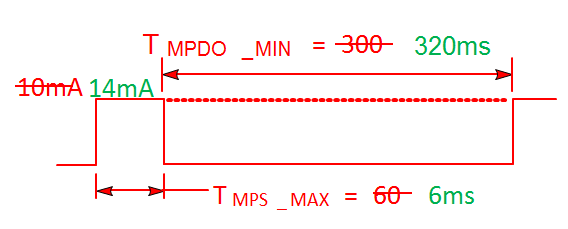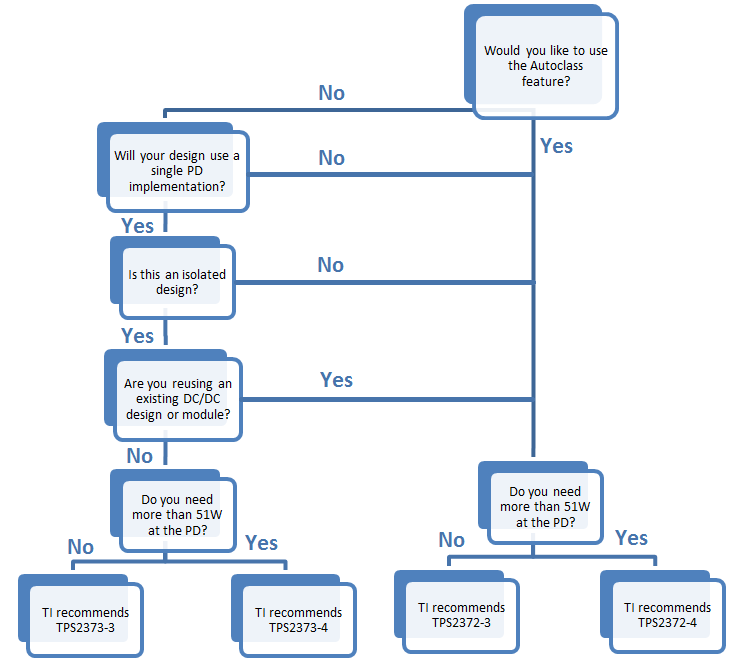SSZT665 july 2018 TPS2372 , TPS23880

The Institute of Electrical and Electronics Engineers (IEEE) 802.3bt standard will publish in September 2018 and enable Power over Ethernet (PoE) applications up to 90W/71.3W (sent/received) such as LED connected lighting ballasts and digital signage. With the new standard fast approaching, many electronic system designers need to quickly familiarize themselves with the new features of the standard and understand key considerations for starting a new 802.3bt design.
First, power-sourcing equipment (PSE) and powered device (PD) end-equipment interoperability and compliance to the 802.3bt standard are essential. No third-party conformance suites currently exist to offer a quick IEEE802.3bt compliance check. Thus, you need to carefully consider which IC vendor is most likely to deliver solutions that are interoperable and compliant. Here are some things to look for – TI already meets all of these requirements:
- Expertise developing both ends of the cable (powered devices [PDs] and power-sourcing equipment [PSE]).
- Involvement in the 802.3bt standard.
- Involvement with certification houses like Sifos Technologies and the University of New Hampshire InterOperability Library (UNH-IOL).
- Involvement with the Ethernet Alliance (EA) logo program, whose goal is to enhance the experience of end users by minimizing interoperability issues in the market.
Key Considerations for IEEE 802.3bt PSE Devices
PSE with one Analog-to-digital (ADC) per port, such as the TPS23880, enables for a more robust method of meeting the new 802.3bt maintain power signature (MPS) timing requirements. The new 802.3bt MPS, which is an electrical signature presented by the PD to assure the PSE that it is still present after the operating voltage is applied, has been shorted by 10x compared to the 802.3at standard, as shown in Figure 1.
 Figure 1 New IEEE 802.3bt MPS Timing (Green) and IEEE 802.3at MPS Timing (Red)
Figure 1 New IEEE 802.3bt MPS Timing (Green) and IEEE 802.3at MPS Timing (Red)PSE devices that have one shared ADC for all ports run the risk of not being able to meet the new timing requirements. Should that occur, the PSE may remove power even if a PD is providing the desired MPS signal. For example, when an eight-channel PSE with one ADC provides power to all eight channels, the ADC must measure the current through each channel to ensure that the MPS signal is received, which could take a significantly long time to process. With solutions that have one ADC per port, there is no such concern.
Key Considerations for IEEE 802.3bt PD Devices
As Figure 2 shows, first consider if the autoclass feature is useful in your system. This feature allows a PD to communicate its effective maximum power consumption (including cable loss) to the PSE, enabling more efficient power budgeting. To learn more about this new feature, check out the “Understanding Autoclass in TI’s IEEE 802.3bt Powered Devices (PD)” video.
Also consider whether your design will use a single or dual PD implementation. Dual PD implementations on the market today tend to use Universal Power over Ethernet (UPOE) (a noncompliant method for delivering higher power that was deployed while the market awaited the IEEE 802.3bt standard). To learn about nonstandard high-power solutions like UPOE and how TI’s 802.3bt solutions work with nonstandard solutions, watch the “TPS23880 working with noncompliant high power PDs (UPoE, PoE++ and PoH)” and “TPS2372/3 working with noncompliant high power PSEs (UPoE, PoE++ and PoH)” videos.
 Figure 2 IEEE 802.3bt PoE PD Decision Tree
Figure 2 IEEE 802.3bt PoE PD Decision TreeAs you can see, there are many things to consider when choosing an IEEE 802.3bt PoE PSE or PD for your design. Now that you have a good understanding as to what to consider when choosing your PoE PSE and PD devices, go ahead and start your IEEE 802.3bt design today.
Additional Resources
- Watch these videos:
- Read the blog post, “Would you like a logo to go with your PoE system?”